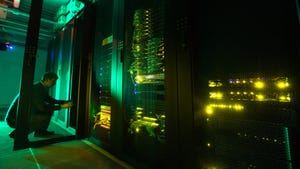December 4, 2007
Sales of blade servers hit $1 billion in the third quarter, according to IDC's Worldwide Quarterly Server Tracker, which said that blades represented 7.9 percent of server market revenue in the quarter. HP was the market leader in the blade sector with 42.1 percent share, followed by IBM at 32.9 percent.
"2007 is turning out to be a monumental year for server blades," said Jed Scaramella, senior research analyst in IDC's Enterprise Computing group. "Server blades remain the fastest growing segment and for the first time accounted for over 10% of all servers shipped. The competitive space will only prove to become more interesting as vendors continue to roll out new blade initiatives, including virtual I/O solutions and chassis targeted to small-medium business sites."
The growing adoption of blades is generally bullish for data center demand, as it means more high-density server installations, which typically are difficult to support in a legacy data center. But the picture is somewhat mixed once you look beyond blades, according to IDC.
Factory revenue in the worldwide server market grew 0.5 percent year over year to $13.1 billion in the third quarter, while unit shipments grew 6.3 percent, a slight decrease from the 7.8 percent growth rate in the same period last year. IDC saw some signs that enterprise IT investment may be slowing:
"Although demand for x86, Blades, and Unix systems remained strong, other parts of the market cooled off in the third quarter," said Matt Eastwood, group vice president of Enterprise Platforms at IDC. "Concerns about the economy, particularly in the U.S., are causing customers to re-think their infrastructure needs at the same time that new levels of compute and power densities are expanding power and cooling challenges and driving different IT infrastructure acquisition patterns in the market. IDC believes that we are in the early stages of a market-wide transition, which will require significant IT investment in a more flexible IT fabric; however, concerns among buyers about an economic slowdown could slow investment in new systems somewhat."
About the Author
You May Also Like

.jpg?width=300&auto=webp&quality=80&disable=upscale)





